The Forum
July 2020
July 14, 2020
A Modest Proposal for Climate Resilience, Sustainability, and Social Justice at Florida’s
Largest Metropolitan University
by Dr. M. Martin Bosman, Associate Professor, School of Geosciences and
Dr. Gregory Herbert, Associate Professor, School of Geosciences
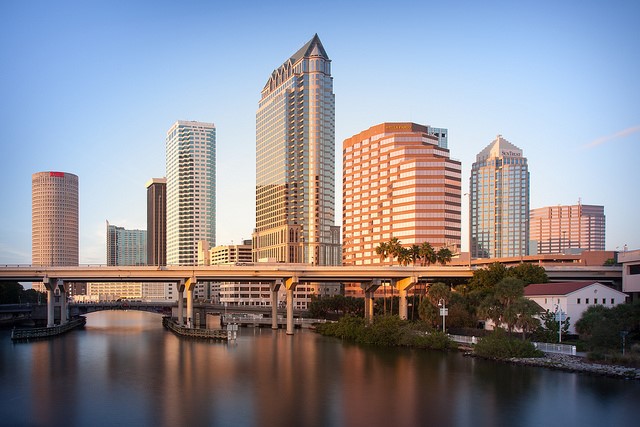
Source: Wikimedia
Tampa tends to land on two kinds of lists these days. The first is the fun quality-of-life
rankings of most U.S. metros: best places to retire; best cities for staycations;
best cities for celebrating St. Patrick’s Day. The second is the scary hurricane list
[where] Tampa’s worst-in-the-nation vulnerability to hurricane-driven storm surge
made news a year ago and again in June.
– Richard Danielson, Tampa Bay Times (2016)
The Urgency of Now
Record floods, wildfires, heatwaves, intense thunderstorms, and sea level rise across the world prove that the climate crisis is no longer a vague or distant concept. The University of South Florida (USF) which is the size of a medium U.S. city will have to face a series of emerging risks to its strategic operations, infrastructure (notably the new Medical School and related facilities on the Downtown Tampa riverfront), and its capacity to provide services and products to the Tampa Bay region (valued at $4.4 billion annually) from sea level rise and extreme weather events. Located in one of the fast-growing city-regions in the U.S., the entire USF community is exposed to catastrophic disruption, with the surrounding impoverished community expected to suffer disproportionately from the problems caused by climate and environmental disruptions.
What’s To Be Done? Building an Environmental Justice Frontline University
Institutional Commitment to Sustainability. Climate change is more than just an existential threat. It is also an opportunity for a preeminent research and educational institution like USF to develop a comprehensive sustainability mission through innovations in its operations, education, research, and community outreach. Such a mission should at a minimum involve: (1) a coherent vision but decentralized charters and implementation across USF’s “one university geographically distributed” campus system. Decentralization enables faster response times, increased opportunities to generate and test new ideas, and encourage more efficient use of resources; (2) comprehensive asset mapping, gap assessments, and tracking dashboards; (3) support of community- and student-engaged transdisciplinary research in core sustainability areas (e.g., energy use, waste streams, emergency planning and adaptation, etc.); (4) well-planned, long-term investments in energy efficient technologies, e.g., HVAC software, which can be initially expensive but result in dramatic cost savings over the long run; and (5) a broad view of ‘sustainability’ that goes beyond energy, recycling, and waste management by including good health and well-being, affordable clean energy, and social and economic justice.
Curricular Innovation. USF is well positioned to experiment and role-model adaptation and mitigation strategies on behalf of Tampa Bay, if not the entire state of Florida, by developing minors and/or certificate programs that promote sustainable business models, products, and services for the university and community (e.g., adding solar, switching to electric vehicles, measuring greenhouse gas output and waste streams, etc.) and facilitating how to commercialize them on behalf of community empowerment. USF can also encourage students to promote environmental, social, and economic sustainability in their personal and professional lives through either core or capstone environmental literacy courses in the undergraduate general curriculum. Such courses would ensure that students, who include many decision-makers of the future, fully grasp the consequences of the climate crisis, including the social consequences, and “meet their social mandate to help create a vital, ethical, and prosperous civil society” (https://secondnature.org/signatory-handbook/the-commitments/).
Transdisciplinary Research Networks. Responding effectively to climate change requires institutional structures that match the scope and complexity of the problem at hand. Within a university, this means more interconnected and versatile networks of researchers that combine knowledge domains and skill sets in novel ways to address real-world problems. Because boundary-crossing research is constrained by high entry costs (i.e., it is arduous, time consuming, and risky), the university must facilitate and incentivize these efforts.
Some of the research networks needed to do transdisciplinary climate research are already being built at USF. For example, the recently established Institute for the Advanced Study of Culture and the Environment (IASCE) is steadily being recognized as a centralized hub for interdisciplinary research networks to meet in short-fuse workshops; technical training; distinguished speaker series; and hackathon competitions. Currently, IASCE is home to three specialized faculty working groups that work on issues largely centered around sustainability and resilience (disease, conservation, climate, society). The working groups include roughly 120 researchers from colleges across the Tampa campus (i.e., Arts & Sciences, Engineering, Health, Business, Moffitt Cancer Center, Contemporary Art Museum), and showcase a range of faculty projects and emerging interests.
Transdisciplinary Research Processes. Among the most successful models for facilitating transdisciplinary research supported by IASCE is the hackathon competition (https://ncbi-codeathons.github.io/). Hackathons consist of diverse teams of researchers working on real-world problems to develop proof-of-concept prototypes. Teams consist of 5-10 researchers that typically include data scientists who can manipulate and analyze Big Data (for example about smart cities, remote sensing, disease spread, and social media); social scientists with expertise in complex social systems, ethics, biases, and storytelling so questions and solutions are framed properly; and community stakeholders from government, industry, and the general public to ensure buy-in from end users. Knowledge domains and skill sets can be reorganized rapidly, again and again, to tackle new problems. Most importantly, the hackathon model overcomes many traditional institutional barriers to innovation in research by: (1) providing time-limited spaces that allow faculty to explore collaborations outside the scope of their regular work and/or to make progress on projects that would otherwise languish due to a lack of time or expertise; (2) creating new expertise networks that may continue after a hackathon is over; and (3) having built-in activities (beta testing research tools and models) to bridge research, community, government, and industry barriers. With the right nurturing, such events could catalyze transformative changes across USF’s climate change and sustainability research community, educational mission, and civic actions.
___________________________________________________________________________________________________
July 13, 2020
Cities Are Still the Place to Be
by Dr. Elizabeth Strom, Associate Professor, Urban & Regional Planning
For Urban and Regional Planners, one of the tenets of our field is to promote well-designed,
compact cities. We like places that have density, where houses and stores are close
together, where people can walk, bike, or use transit. We encourage these trends because
we know the alternative—sprawling suburbs linked by highways—comes with high environmental
and social costs.
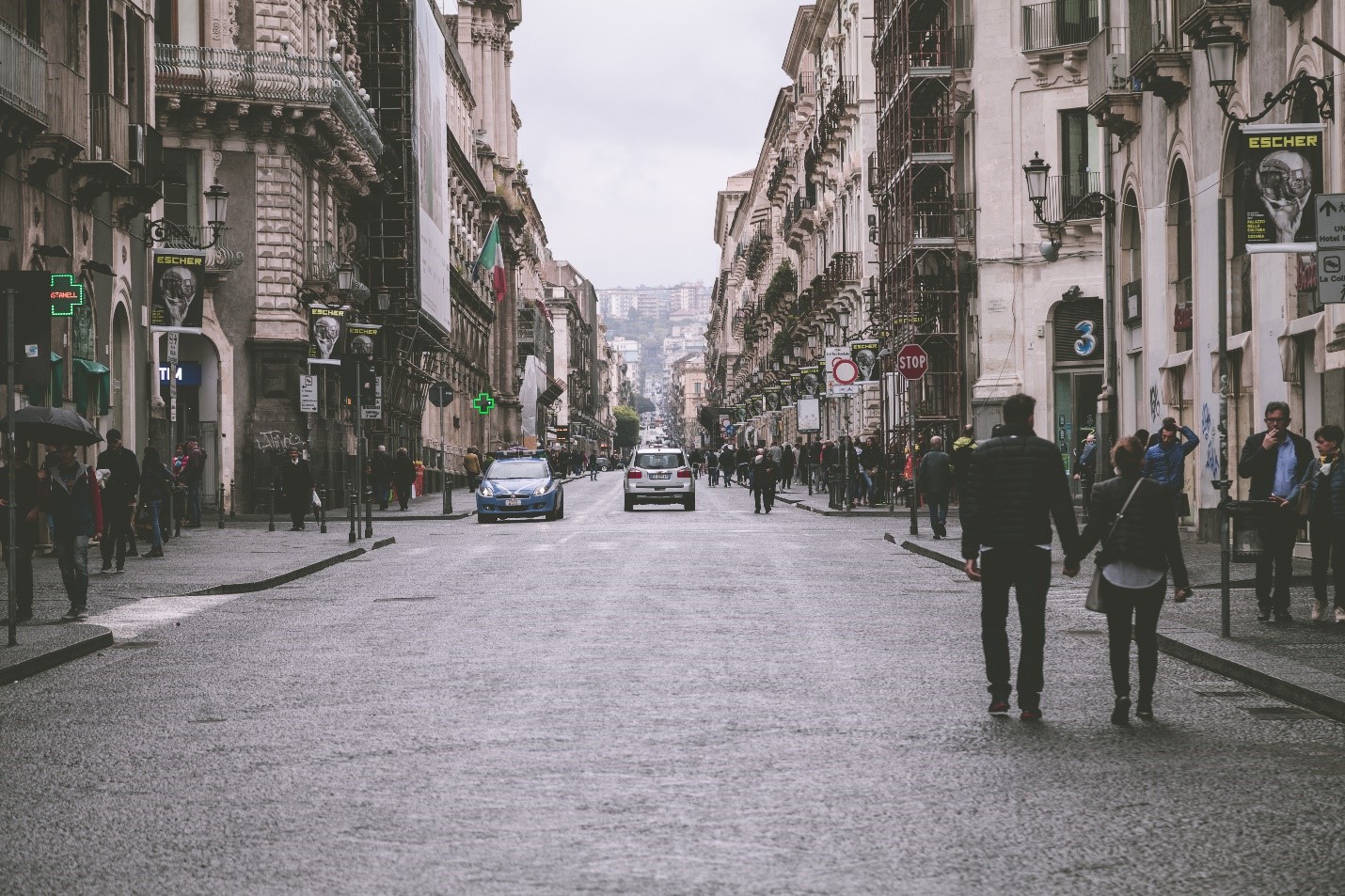
Yet today, as we remain "safer at home," urban density isn’t looking very appealing. It’s clear that places where people are in frequent contact—public transit, crowded sidewalks—can be fertile ground for transmission. Stay at home orders, furthermore, are easier to swallow when said home has a few extra rooms and some outdoor greenery. Throw in a backyard swimming pool and being "stuck at home" can sound pretty appealing. These amenities, however, are rare in city neighborhoods.
Does our experience weathering Coronavirus mean that efforts to encourage urban density are misguided? Urban geographer and author Joel Kotkin has never been a big fan of the push for density; he predicts that COVID-19 will bring on the "coming age of dispersion" as people flee large cities for less dense places. But there are good reasons to continue to promote strong cities, even now.
First, let’s dispel the notion that Coronavirus is uniquely an urban problem. To be sure, our densest city, New York, has had a dramatic struggle with COVID-19, with over 19,000 deaths as of May 7th. But there are other examples of dense cities that have managed the pandemic more successfully, for example Hong Kong and Seoul. In the U.S. we see examples like San Francisco, our second densest city, where (as of this writing May 2020) just 31 patients have died of COVID-19.
Evidence suggests that early adoption of widespread testing alongside clear stay-at-home directives can help reduce impacts, even in cities. And let’s remember that some of the first COVID-19 clusters have been found in suburban areas like New Rochelle, NY and Kirkland, Washington. When we look nationally at counties with high per capita infection rates, we find rural counties in Georgia, Louisiana, and Pennsylvania among those most impacted by COVID19. Here in Florida, while our worst hotspots are in the Miami-Ft. Lauderdale area, we find higher infection rates in rural Suwannee, Liberty, and Madison County than in Tampa or Orlando. Those living outside cities, lacking access to testing facilities and medical treatment, could face worse outcomes than city dwellers if the infection spreads in their area.
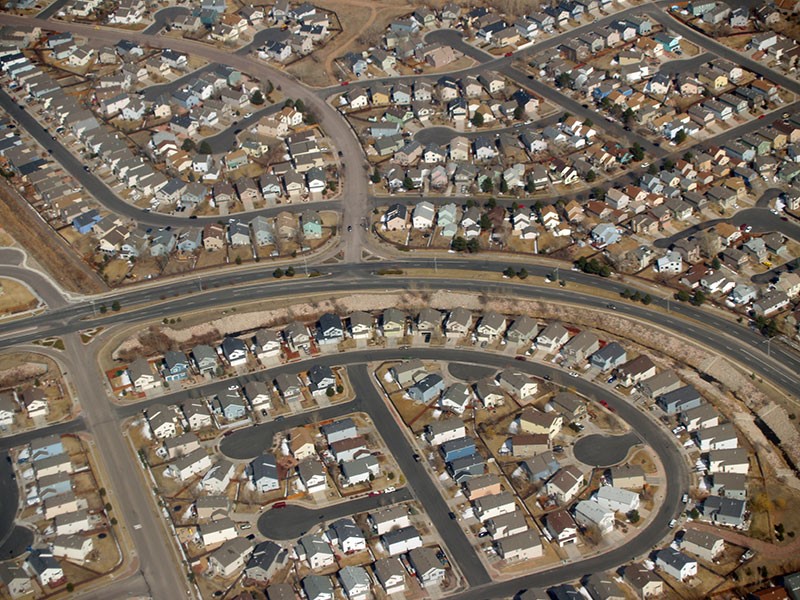
Moreover, this pandemic should not blind us to even more profound threats to our health and economic wellbeing. There are reasons planners want people to drive less: in 2018, the U.S. reported 36,560 automobile fatalities. The new highways we need to link far-flung exurbs destroy animal habitat and create polluting runoff. And aren’t zoonotic viruses, such as this novel Coronavirus, thought to be more prevalent today because of encroachments on animal habitats? Automobile commutes account for some one-quarter of all greenhouse gas emissions, hastening the climate change trends that are particularly problematic for Floridians.
Finally, urban agglomerations are epicenters of economic, scientific, and cultural innovation. Studies associate cities with higher levels of productivity and innovation. No doubt the research that will lead to a COVID-19 vaccine will be done in urban areas. City environments will be the launching pads for our much-needed economic regeneration.
Florida cities like Miami, Tampa, and Orlando have gained population in recent years, and with the state projected to gain 20,000 new residents a month, we need to continue to promote city living. Even dense urban areas can have high quality buildings and open spaces that afford comfort for those needing to stay at home. Don’t let the Coronavirus chase us out of town.
Reprinted with permission from https://www.usf.edu/arts-sciences/departments/public-affairs/documents/blog/elizabeth-strom-052020.pdf
___________________________________________________________________________________________________
July 8, 2020
Manifesto for a Sustainable University: Big Picture Thoughts
by Alex Levine, Department of Philosophy, University of South Florida
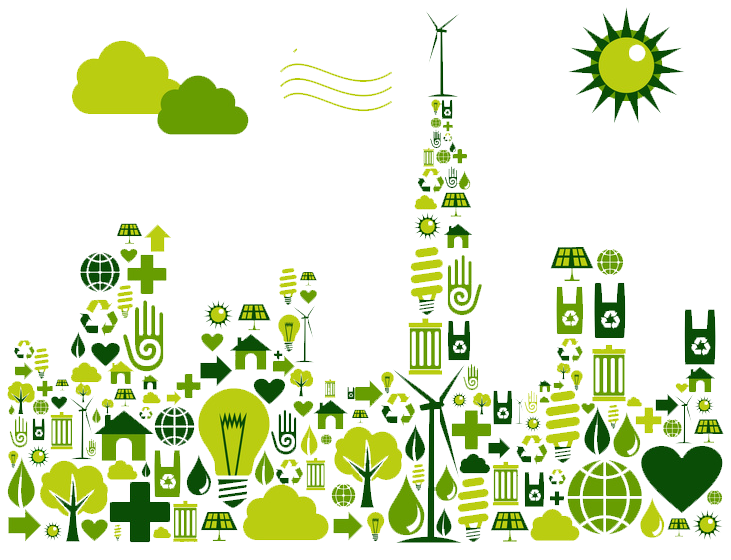
There are easy ways to think about sustainable universities, and hard ways. Even the easy ways are hard, but the questions they help pose are at least relatively straightforward. Can a university reduce its carbon footprint? Of course: universities can invest in photovoltaics, electric busses, low-carbon construction methods, locally sourced foods and other consumables, high-efficiency lighting and climate control, and so on. The necessary investments are not cheap, but they often serve the cause of sustainability not only by reducing the university’s environmental impact, but also by generating long-term savings in operating expenses, perhaps sufficient savings that, amortized over the service life of purchased equipment, a net cost reduction results. There are at least hopeful signs that such a strategy can work, as at the Pennsylvania State University. The same holds for the prospect of formulating and implementing sustainable responses to COVID-19, and viral pandemics in general: again, the necessary investments (in remote-instruction technology, in PPE, in instructional spaces hospitable to social distancing) aren’t cheap, but they may generate long-term savings.
The problem for most universities is that the constraints of funding cycles, electoral cycles, accreditation cycles, and strategic planning cycles are inimical to commitments on the necessary timescale. A much harder way to think about sustainable universities is to think seriously about these constraints, taking them as an invitation to deeper reflection on the history and sustainability of the very funding model of contemporary academia. The contemporary American university system is the product of a rapid, dramatic expansion during the post-war years, as it geared up to serve the baby boom, a generation unprecedented both for its size and for the access its members enjoyed to the surplus wealth necessary for pursuing post-secondary education. That expansion was funded on the expectation of growth, an expectation that remained unchallenged through the middle of the 1970s.
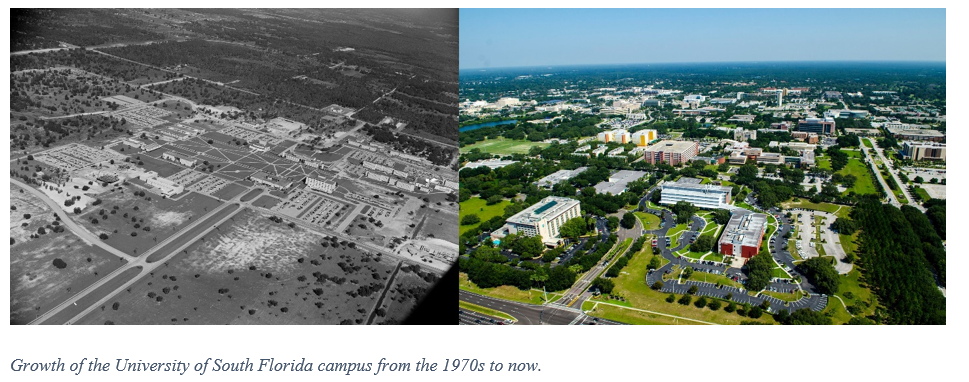
Since then, however, the expectation has been consistently thwarted. American population
dynamics have shifted, and demand for post-secondary education has grown much more
slowly, when it has not stagnated outright. Yet our basic funding model has not changed
in response. We have lost economies of scale. The burden of increased costs is shouldered
largely by students, such that our recent alumni, rather than pouring disposable income
into their alma mater, find themselves shouldering trillions of dollars of student
loans, setting the stage for our next great financial crisis. During the pandemic,
unemployment has reached its highest levels since the 1930s, and a critical mass of
alumni face default. Bernard Madoff did not set out to run a Ponzi scheme. But when
his fund reached the point where promises to old investors could be honored only on
the strength of new subscriptions, he crossed a line. At the present time, the American
university system is not quite a Ponzi scheme, for we still deliver a product. However,
the time may come when the value of our product, to individuals and to the society
we serve, ceases to justify its cost.
Universities should be exemplary institutions, and by showing that we can reduce carbon footprints and flatten our curve while at the same time reducing our costs, we will set an example. That’s all to the good—but it is not the same thing as making our universities sustainable. A campus built of green buildings, festooned with photovoltaics and wind turbines, bordered by gardens and greenhouses, is of no use to the planet when the buildings are empty, the turbines rusting, the gardens poisoned by rising salinity, and the alumni who once studied there crippled by debt. Wishful thinking does not make this prospect any less likely.
The sustainable university depends on a sustainable business model. Speaking strictly for myself, I do not know whether such a model is even possible, let alone what it would look like. However, a university is among other things a brain trust. If what I envision is possible, then it will emerge as the product of collaborative work by the very smart, highly trained people who inhabit the university, and who have made sustaining and nourishing it their life’s work. If we can succeed, we’ll both save our institutions and justify their continued existence to the societies we serve, by demonstrating the social value of having a brain trust in the first place. For the transition from a growth-based funding model to a sustainable model is a challenged faced both by universities, and by the larger-scale systems of which we are part. To call for a sustainable university is to call for universities to exercise leadership beyond addressing planetary challenges.
____________________________________________________________________________________________________